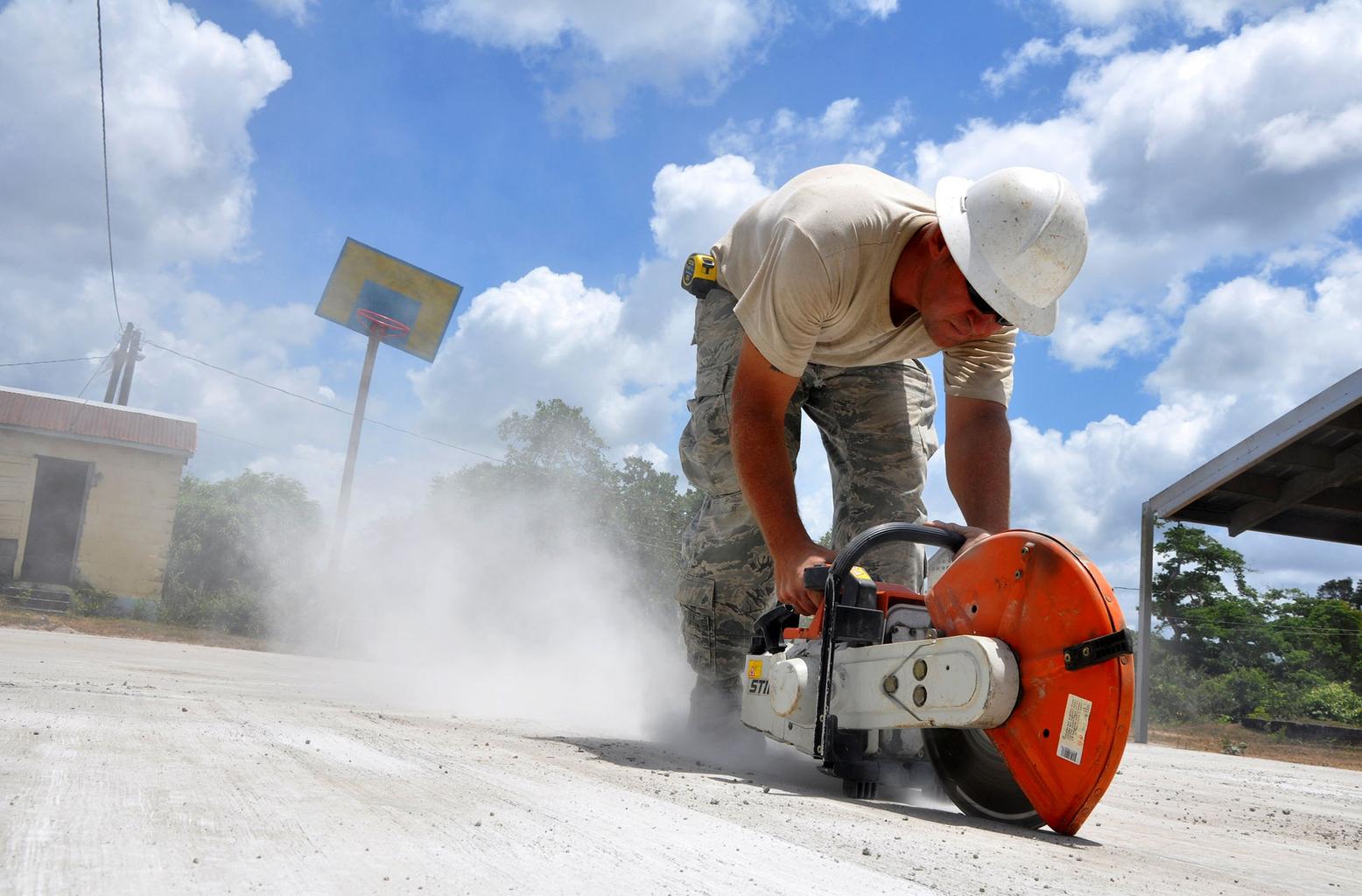Health and safety inspector says a lack of awareness permeates construction industry

An HSE Inspector with Ottawa-based real estate development firm, Jody Walsh has more than 25 years of experience in the construction industry, both as a labourer and as a safety professional of over a decade.
Walsh first encountered the issue of silica when he was a labourer for a masonry company. In the masonry profession, he explains, “you’re in silica 24/7”. “You’re cutting it, you’re mixing it, you’re in the presence of it constantly.” Today, he educates the up-and-coming generation of workers, and employers, on the importance of recognizing the ever-present risks associated with the job site—including crystalline silica, also known as ‘silica dust’.
A natural material found in concrete, brick, mortar and various other construction materials, the concern around silica arises “anytime it becomes airborne,” says Walsh.
“Take masonry for example, when you’re mixing the mortar, when you’re opening the bag and putting the bag into the mixer … when you’re taking the concrete blocks and cutting bricks—it becomes airborne. Whenever you are creating that dust, that fume, that’s when you create crystalline silica. That’s what you get in your lungs, unfortunately—and once it goes in, it doesn’t come out.”
Read next: How to pick the best fume hoods for hazardous worksites
Protecting your workers through training
When asked what steps managers need to take to protect their workers, Walsh states emphatically, “Number one is training. That’s the main issue right now.”
Despite silica being regulated as a “designated substance” under Part IV of Ontario’s Occupational Health and Safety Act and Regulations, or “The Green Book”, since 1983, many employers and workers continue to overlook the risks. “You’re supposed to have a working silica plan in process to prep your workers. And many companies still don’t have anything in place,” says Walsh.
He adds: “I went around recently and caught infractions—[workers] not even wearing a dust mask and they’re just there in a cloud of dust.”
Walsh refers to the lack of awareness that appears to permeate the industry: “I speak with the workers and ask them, ‘why aren’t you wearing this…why aren’t you doing what you need to do?’ Lots of time they don’t have the PP (personal protection) in place. They say their employer never provided it to them, which is a major no-no when it comes to the Green Book. Because according to the Green Book, anytime your employer puts you in a position that needs PPE, they’re mandated to supply it… but they’re not implementing it.”
Investing in new technologies
The next step is to invest. “Employers have to purchase the new equipment. There’s a lot of new products out there that help reduce the dust production,” says Walsh.
A myriad of new technologies are now on the market, aimed at eliminating silica dust. These new technologies vacuum the dust away or, alternately, weigh it down. Ever improving HEPA filtration systems also offer circulated air.
Walsh explains: “You get saws that, as you are cutting, [the dust] is vacuumed into a filter, so the dust that is created is vacuumed away. If you don’t have a dustless system, you can use water. The saw—it’s called a wet saw—as you’re cutting, it creates a mist, so it doesn’t create a dust.”
A lot of manufacturers, like Hilti, Dewalt, Milwaukee, now have products with these attachments. Walsh is optimistic they will eventually be mandated in Ontario. The problem is many companies don’t want to invest in the new technology.
The problem with PPE
Does it go without saying that personal protective equipment should always be utilized? “100 per cent,” says Walsh. “But again, if you don’t use it with the control measures, PPE is always the last resort. If you can eliminate it at the source, that’s your best option. That’s using your dustless…that’s using your waters…any material to get rid of the dust.”
The standard should be 100 percent. “Out there right now, everyone is doing the very bare minimum—like an N95 mask—that’s pretty much it.” He further explains that, technically, workers should be using P100 masks, which offer close to 100 percent particulate filtration.
Ideally, workers should also be wearing protective suits, that offer full coverage. “When you’re cutting blocks and bricks, you’re bent over and a lot of times the dust accumulates on the legs of your pants. You don’t realize… if you don’t clean your pants properly, you get in your car [and] there goes the dust. So, they want it to be [treated] very similar to asbestos. Technically, you should have a white suit on and you take it off at the end of the day.”
Walsh proposes a simple standard that promises to have lasting benefits - no more dry cutting. If you’re going to be cutting blocks, or anything that creates silica dust, you have to go over to dustless or a water system. The problem, he adds, is there is not enough procedures in place and companies are doing only the "bare minimum".
Gross negligence appears rampant
Walsh warns of the implication for large and small companies, if these safety measures are not put into place. “I mentioned to some of the employers or upper [management] in certain companies, this could be a lawsuit down the road. If you’re not putting protection in right now—people are becoming more aware of silica—in 15-20 years’ time, you [have] six or seven guys that [have] silicosis.”
“I try to tell these guys, you’re better off [buying] your products now to reduce the dust—supply your guys with PP—because eventually, that’s a lawsuit that’s waiting to happen. They’ll win their lawsuit. You’re going to court. You’re going to pay millions of dollars.”
Is the construction industry negligent when it comes to silica? Walsh says, “100 percent. That’s a major issue right now. Some companies are a lot better than others, but 80 per cent of companies that I deal with right now, it’s just neglect.”






